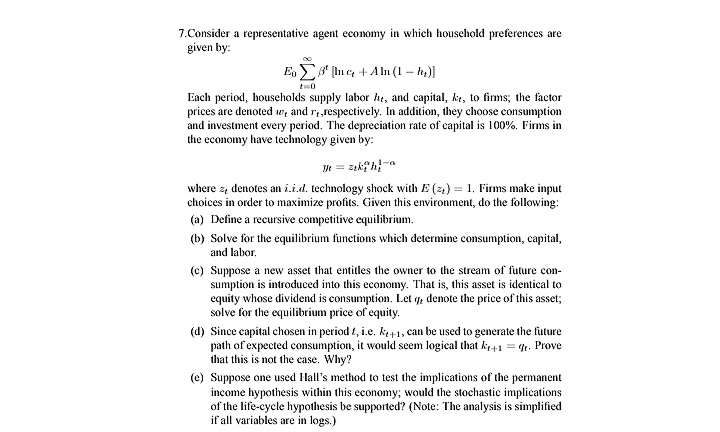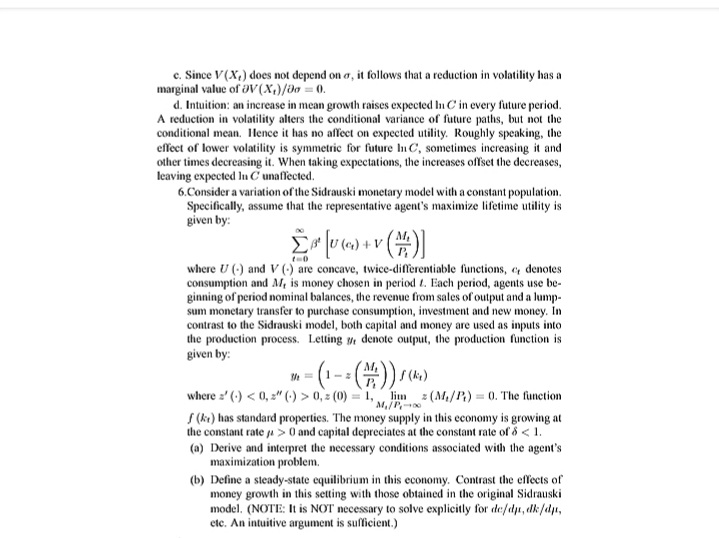


7.Consider a representative agent economy in which household preferences are given by: CO Eof' Unce + Aln (1 - h,)] 1=0 Each period, households supply labor he, and capital, be, to firms; the factor prices are denoted w, and re,respectively. In addition, they choose consumption and investment every period. The depreciation rate of capital is 100%, Firms in the economy have technology given by: where z, denotes an aid. technology shock with E (2) = 1. Firms make input choices in order to maximize profits. Given this environment, do the following: (a) Define a recursive competitive equilibrium. (b) Solve for the equilibrium functions which determine consumption, capital, and labor. (c) Suppose a new asset that entitles the owner to the stream of future con- sumption is introduced into this economy. That is, this asset is identical to equity whose dividend is consumption. Let q, denote the price of this asset; solve for the equilibrium price of equity. (d) Since capital chosen in period &, Le. keen, can be used to generate the future path of expected consumption, it would seem logical that bet = ge. Prove that this is not the case. Why? (e) Suppose one used Hall's method to test the implications of the permanent income hypothesis within this economy; would the stochastic implications of the life-cycle hypothesis be supported? (Note: The analysis is simplified if all variables are in logs.)c. Since V(X, ) does not depend on o, it follows that a reduction in volatility has a marginal value of OV (X,)/Do = 0. d. Intuition: an increase in mean growth raises expected In C in every future period. A reduction in volatility alters the conditional variance of future paths, but not the conditional mean. Hence it has no affect on expected utility. Roughly speaking, the effect of lower volatility is symmetric for future In C, sometimes increasing it and other times decreasing it. When taking expectations, the increases offset the decreases, leaving expected In C unaffected. 6. Consider a variation of the Sidrauski monetary model with a constant population. Specifically, assume that the representative agent's maximize lifetime utility is given by: where U (.) and V (-) are concave, twice-differentiable functions, 4, denotes consumption and A, is money chosen in period . Each period, agents use be- ginning of period nominal balances, the revenue from sales of output and a lump- sum monetary transfer to purchase consumption, investment and new money. In contrast to the Sidrauski model, both capital and money are used as inputs into the production process. Letting mr denote output, the production function is given by: where =' (.) 0, = (0) = 1, lim = (Af/B) = 0. The function f (In ) has standard properties. The money supply in this economy is growing at the constant rate fa > 0 and capital depreciates at the constant rate of 6












